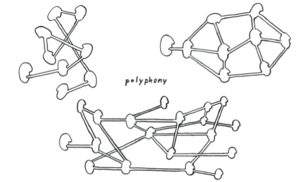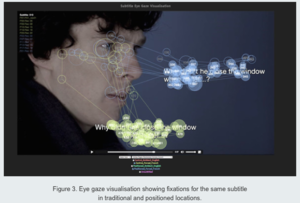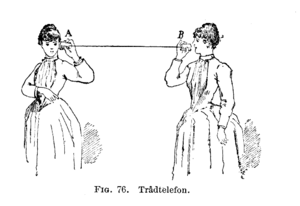Thematic-Navigating Borders and Contours
with Tina Bastajian [[1]]
Synopsis
Sometimes it is almost impossible to infer whether or to what degree a narrator is fallible. (Wayne Booth -The Rhetoric of Fiction, 1961)
http://stuff2233.club:9001/p/Fuzzy-Narrators
This thematic will interrogate in theory and praxis the mutable contours of narrative strategies from early cinema, modes of address in documentary practices, to more data-driven speculative scenarios. A variety of approaches will be explored, such as appropriating and re-positioning the conventions from the silent film era. Early film or the ‘cinema of attractions’[2] used live film ‘lecturers’ also known as ‘Explicateurs’ (Holland), or Benshi [3] (Japan), that attracted viewers and propelled the silent narratives onscreen as well providing forms of translation for films with foreign language intertitles. Such constellations of display coalesce for example, with more contemporary practices known as the performance lecture, neo-benshi or even PechaKucha style presentations.
Throughout this thematic we will locate, re-contextualize, undermine and intervene with such strategies to produce new relationships and encounters with variations of fuzzy,* [4]disembodied, unfaithful, or unreliable narrators [5] and hybrids thereof. The module will navigate in between the interstices of moving image/sound online archives providing an initial platform to consider one’s own work. This may also include forms of documentation, the underscoring of work processes, or constructing new spaces of speculation, inquiry, and spectatorship.
Extended Text
Man is least himself when he talks in his own person. Give him a mask, and he will tell you the truth. Oscar Wilde
While more narrative forms are exploited in the aforementioned practices, it is by working with, through and against such linear tendencies that also call upon us to reconsider the document and documentary forms. Thus, while thinking through the notion of the live ‘lecturer’ we might transpose this concept to the role of the voice or mediator commonly exploited in documentary or essay films, and the use of voice-over (VO), direct address, subtitles, and interviews. Mediators could also include handheld camera techniques (e.g. cinéma vérité /cinema truth) editing or compositional decisions. Such conventions within documentary practices act as carriers and purveyors of truth, authenticity, legibility, fidelity, etc. In contradistinction, these same conventions are exploited in ‘mockumentary’ film by manufacturing fake, confabulated, or partial truths. It is through these very fuzzy devices which also poignantly calls into question the malleability of storytelling practices, and complex issues such as memory and identity, in which to interrogate and subvert static and binary thinking.
When applying the documentary vernacular of fidelity for example to networked behaviors, what emerges from more unstable media could include unreliable browsers, themes of uncertainty, the glitch and the errant. (glitchbrowser) ([6] (blogspot.jodi.org) [7]) These attributes also reveal varying appearances of fuzzy, ambivalent or unreliable narrators such as networks that render “out of range” to other mis/readings whether they be analog, digital, networked or varying combinations. How might these and other errant behaviors and occurrences be incorporated, or translated to, with, alongside and beyond early film and documentary approaches to contour fuzzy and uncharted narrative strategies.
Coda
This and other modular thematics at Piet Zwart Institute (Master of Media Design & Communication), “aims to develop your understanding of your work in relation to others in the field and help you define your position within a broader cultural, technical and social contexts.” Consider the below "Topics for Further Investigation" as a starting point to expand and perhaps redefine the notion of fuzzy or unreliabilty to and with other mediums and contexts, refer to the wiki entry at the Living Handbook of Narratology: Shen, Dan. "Unreliability", Paragraph 44. In: Hühn, Peter et al. (eds.): [8]
(a) Unreliable narration in non-verbal media and in verbal genres other than prose fiction. (b) In prose fiction, unreliability in postmodern fiction, second-person narration, simultaneous narration, etc. (c) Unreliability in poetry, e.g. in the “dramatic monologue.” (d) The relation between unreliable narration and gender, class or racial issues. (e) In dealing with textual incongruities, whether there are other integration mechanisms or conceptual frames apart from those already identified. (f) How different critical theories lead to different conceptions of the same textual incongruities. (g) When a text is translated into another language, how the different cultural context with different social norms bear on the interpretation of unreliability. (h) Whether there are other causes underlying unreliable narration. (i) Whether there are other indicators of unreliable narration. (j) How to carry out a rhetorical investigation of unreliability more effectively, especially in terms of a text produced in a different historical or cultural context.
*Fuzzy logic is a term that spans many disciplines. As a computational term, it was first coined by Dr. Lotfi Zadeh in 1965 and has been absorbed by other fields such as philosophy, engineering, mathematics, sociology, linguistics and statistics to name a few. “Zadeh looks around him in the real world which he finds pervaded by concepts which do not have sharply defined boundaries, where information is often incomplete or sometimes unreliable.” <http://www.azer.com/aiweb/categories/magazine/24_folder/24_articles/24_fuzzywhat.html>
Topics-by DAY
Monday: Locating the fuzzy, the unreliable
10:00-11:30 Introduction
- Outline of the thematic
- Strategies & Goals
- Reading assignment/Discussion
(break-away groups /main group)
11:30-11:45-BREAK
11:45-12:45
- Clips to screen/discuss
- Students present chosen fuzzy 'objects' (info on pre-charette see document)
File:PZ Thematic Day1 Navigating Borders Contours.pdf
12:45-13:45 Lunch break
13:45-15:00
- Continue with fuzzy 'objects'
15:00-15:30 BREAK
15:30-17:30 Screenings
- (...)
- (...)
17:30-18:30 Dinner Break
18:30-20:30 Film screening and Group charrette work
Pre-reading (mandatory) for morning/afternoon discussion & praxis
- Marie-Laure Ryan, Narration in Various Media [9] - originally published in, Poetics Today Volume 23, Number 4, Winter 2002.
- Sarah Kosloff, "Further Remarks on Showing and Telling" Cinema Comparat/ive Cinema, Vol. I, No. 3, 36-45, 2013[10]
- Germain Lacasse, “The Lecturer and the Attraction” in The Cinema of Attractions Reloaded, ed. Wanda Strauven (Amsterdam: Amsterdam University Press, 2006)
File:The Lecturer and the Attraction.pdf
- Essay on Cameo (live performance) Rachel Joseph, Screened stages and turbulent collisions, Performance Research, 19:5, 77-81, 2014
File:Cameo Text.Turbulent Screens.pdf
- Brief overview (neo)/Benshi: Tosh Berman http://www.altx.com/interzones/kino2/benshi.html
- (neo-benshi programme notes) http://viz.ucsc.edu/wp/vizArchive/vizEventP92.pdf
--optional reading--
Mieke Bal. (1997) Narratology: Introduction to the Theory of Narrative. [11] (Introduction Chapter)
The Rashomon Effect - [12]
Tuesday: Proxies, Subtitles and Other Slippages
"The duration of the subtitles, for example is very ideological. (...) the attempt is always to protect the unity of subject; here to collapse in subtitling, the activities of reading, hearing and seeing into one single activity, as if they were all the same (...)it is because translation is perceived here as a part of the operation of suture that defines the classical cinema apparatus and the technological effort it deploys to naturalize a dominant, hierarchically unified worldview." (Trinh T. Minha, Framer Framed, 1992)
10:00-11:30
CONFIRMED !! MORNING GUEST LECTURE with Dr. Erin La Cour [13]
Fragmentary Intrusions: Fuzzy Narration in Theresa Hak Kyung Cha’s Dictee or Dis-member to Re-member: Negotiating Evidential and Memorial Truth in Theresa Hak Kyung Cha’s Dictee (see newly added text below)
+ Text/Talk discussion - Added Pre-Reading
Break 11:30-11:45
11:45-13:30 Screening: Screen excerpts by Sujin Lee + discussion http://ahomina.com/art-horde/interview-artist-sujin-lee/5612/
Lunch 13:30 - 14:30
14:30- 17:00 Groups
Short Dinner 17:00-18:00
18:00-19:00 Screening:
- Call Cutta- A documentary by Arjan Dutt (2005) See the project Call Cutta: A Mobile Phone Theater[14] by Haug/Kaegi/Wetzel-
- Excerpt: Hacked Circuit, Deborah Stratman, 2014
Pre-Reading for Tuesday: * ADDED TEXT - Anne Anlin Cheng. "Memory and Anti-Documentary Desire in Theresa Hak Kyung Cha's Dictée" File:Cha by cheng 1.pdf
in MELUS, Vol. 23, No. 4, Theory, Culture and Criticism (Winter, 1998), pp. 119-133
- Sinha, Amresh. (2004) 'The Use and Abuse of Subtitles', in Atom Egoyan and Ian Balfour (eds) Subtitles: On the Foreignness of Film, MIT Press, 172-190.
Link to PDF [15]
- Timothy Barker. (2010) 'Aesthetics of the Error: Media Art, the Machine, the Unforeseen and the Errant.' In Mark Nunes (Ed.). Error: Information, Control, and the Cultures of Noise. File:Aesthetics of Error.Barker.pdf
-Optional Reading:
- Marie-Laure Ryan. Beyond Myth and Metaphor: The Case of Narrative in Digital Media [16]
Some Musings on Iterations and Encounters - re: Call Cutta(s)
Wednesday: The Performance Lecture & Speculated (meta) Narratives
10:00-11:30 Reflect/discuss on prior texts in relation to today's texts
11:45-13:00 Screen clips: TBD
13:00-14:00 Lunch
14:00-17:00 Breakout Praxis Groups
16:30-17:30 Wrap-up Praxis
17:30-18:30 present/narrate/mime/code/screen /___ / etc - fuzzy works in progress -
Pre-Reading for Wednesday:
- Solveig Gade. 'Performing Histories Archiving Practices of Rimini Protokoll and The Atlas Group' [17] in (eds) Gunhild Borggreen and Rune Gade Performing Archives/Archives of Performance, Univ. of Chicago Press, 2011.
- Jeffrey Wallen. 'The Lure of the Archive: The Atlas Project of Walid Raad' Comparative Critical Studies, 8.2-3, 2011[18]
- Rike Frank. 'When Form Starts Talking: On Lecture-Performances' Afterall Journal, 33, Summer 2013. [19] (seems like a preview version? Does somebody have a subscription or a full pdf? Thx. Colm.) here [20] we can purchase PDF of the article for 14$, we can buy one. Natalie




